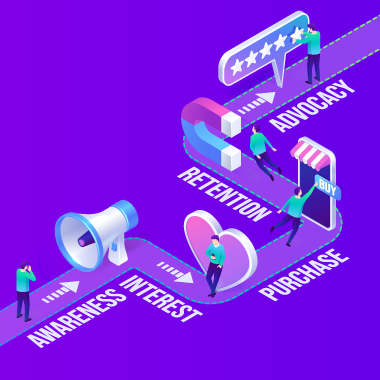Adopting a multichannel strategy is one of the most effective ways to grow your business. In fact, multichannel selling is expected to exceed $491 billion in the U.S. alone this year. But expanding across channels and geographies is challenging when each one has its own requirements, audience, and tone. Multichannel commerce and fulfillment solutions can help.
We recently joined Rithum partners, eDesk and Amazon Multi-Channel Fulfillment (MCF), for a webinar on How to Provide an Extraordinary Multichannel Customer Experience, featuring:
- Alison Held, Senior Product Manager at Rithum
- Abhi Tiwari, Director of Product Management and Technology at Amazon Multi-Channel Fulfillment
- Darren Heaphy, Head of Product at eDesk
Can you add more channels and still provide stellar experiences — without subtracting from the bottom line? These panelists believe it’s possible with the right strategy.
What the Best Sellers Do
“It’s important to listen to your customers and be where they are,” said Heaphy. “Buyers rarely stick to just one channel when shopping, and sellers need to bring their products to where their customers are.”
To effectively scale e-commerce without sacrificing the customer experience, the most successful multichannel sellers:
1. Intentionally assess how their brand is represented online.
Create a unified story across a number of buyer touchpoints. Stay true to your brand, but tailor your presence for each channel, whether it’s your web store or Instagram.
2. Market a diversified portfolio.
Market products that cover as much of the e-commerce journey as possible. Maximize your brand exposure online by selecting specific products to meet the needs of different audiences across multiple channels.
3. Grow without forfeiting operational excellence.
Remove friction where possible to allow and support new selling channels, products and geographies. Invest in systems that support your ability to easily update branded content, product data quantities, fulfillment partners and customer service queries so each additional channel you add isn’t incrementally more expensive.
Rithum’s most successful customers sell on at least five channels on average (and sometimes they’re not even the biggest marketplaces). We’ve even seen an increase in year-over-year growth for what we call “long tail marketplaces” or those that are typically for more niche product verticals or categories.
“If you’re only in a single channel and not experimenting or understanding where other sources of demand are, you can get left behind or miss some opportunity,” said Held.
Retailers can even expand with Amazon’s help using Amazon Multi-Channel Fulfillment (MCF). This service provides fast, reliable order fulfillment for any channel. MCF also has features to help manage each channel’s different requirements.
Multi-channel Selling Challenges
As beneficial as multichannel selling is, it’s not without its challenges. Sellers must address how to:
- Manage inventory across channels
- Adhere to different marketplace requirements
- Provide adequate customer support for different audiences
- Account for lead times in new regions
- Anticipate demand increases from the new channel
- Prepare for tax implications and business considerations ahead of time
Expanding to new regions and marketplaces also requires consistency in customer experiences. Whereas multichannel merchants sell across multiple platforms, an omni-channel strategy takes it a step further by creating an interconnected ecosystem of touchpoints that all converge to support one consistent shopping journey.
To scale while sustaining positive customer experiences, provide a unified look and feel across all the channels you market on so consumers immediately recognize the brand style, values, and traits of your shop. Additionally, the right digital infrastructure makes it easy to tie all your channels together and handle the complexities that come with different marketplaces.
Why Haven’t You Expanded Yet?
Multichannel expansion is a great growth opportunity for anyone in the e-commerce space. If you haven’t yet launched in one or more new areas, start with a review and identify what areas may be limiting your ability to expand.
- Don’t have the time or expertise to create new listings on a selling channel?
- Don’t have the warehouse capacity for new demand or sales?
- Previously had a negative experience that distracted your team from your primary selling channel?
- Don’t know which marketplace is best to start on?
Whatever it is, identifying your hesitations first can help inform your first steps. Centralizing your entire e-commerce strategy is helpful for managing things like quantities, pricing, fulfillment, and compliance across the board. Plus, a multichannel commerce solution allows you to gather data and continually optimize your presence across every channel.
Rithum now supports more than 300 marketplaces globally. Are you selling everywhere you could be? Request a demo to learn how we help you maintain top-tier customer experiences without sacrificing more resources.
Check out the full webinar to learn more about what drives customer queries and get tips for scaling without adding additional resources.



